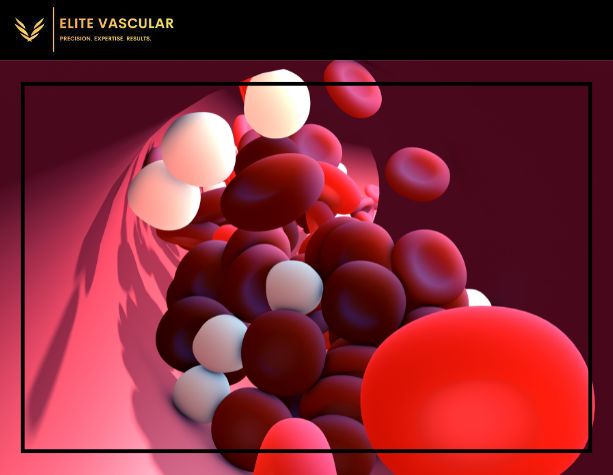- admin
- 0 Comments
The ablation of vein is a general procedure taken to curtail patients suffering with varicose veins & some venous insufficiencies. They are safer, and a suitable procedure to perform in most cases however sometimes risk of the blood clot formation after the surgery. In this article, we will cover the signs of blood clots early and measures you can take to reduce your risk.
Understanding Vein Ablation
Vein ablation is a minimally invasive procedure to close damaged veins so that blood will reroute through healthier veins. Some of these methods include:
- Radiofrequency Ablation (RFA): This method generates heat with radiofrequency energy.
- EVLT: This involves the usage of laser energy to seal a vein.
- Sclerotherapy: is a procedure that closes the treated vein by injecting it with a solution.
As effective as these procedures can be, they also carry risk for complications including blood clots, reinforcing the importance of public awareness and proper management.
Blood Clots after Vein Ablation Symptoms
Symptoms of blood clots (DVT) is another important detail to recognize them for the prompt management. Common symptoms include:
Swelling
One of the most common symptoms is swelling in your leg or around where treatment was given. You may experience swelling after the procedure, but substantial or increasing swelling could be a telltale symptom of clot.
Pain or Tenderness
If you have swelling, pain, or tenderness in your leg- especially the calf- and it does not get better even if you are already resting from that activity for days on end; then this may mean blood clot.
Redness or Discoloration
Your wounds may also become red / change color over the affected wound site. This can sometimes be associated with warmth or feverish feeling in the leg.
Leg Cramps
Pain on “charley horse” spasms is a classic sign of DVT and it usually occurs in the calf.
Heaviness or Fatigue of the Leg
The leg may also become heavy or tired, especially if you have a blood clot on one side.
Shortness of Breath
Sometimes a blood clot travels to the lung and causes what we call pulmonary embolism (PE). Symptoms of PE include difficulty to breathe, chest pains that become worse when breathing deeply or coughing as well as a rapid heart rate and coughing up blood. These are acute medical conditions that need to be addressed on an emergency basis.
What Can I Do to Avoid Blood Clots
Precautions go a long way in preventing blood clots from forming after vein ablation. What are the steps that need to be considered?
Stay Active
Doing some light exercise, such as walking can help improve your circulation and lower your risk of clots. Reduce sitting for long periods of time.
Follow Your Post-Procedure Instructions
Follow the specific instructions provided to you by your physician after having a procedure done, like wearing compression hose or resting with elevated legs for periods of time and taking medications that were ordered.
Stay Hydrated
Good blood flow is a prerequisite for good hydration. Take a lot of water during To day.
Avoid Sitting or Standing for Too Long
If you sit and stand for long time frame then, stop it. Move and stretch every hour or so.
Use Compression Stockings
Wearing compression stockings as directed by your physician can help reduce the risk of blood clots by improving circulation in your legs.
Monitor for Symptoms
Be alert to the signs of blood clots and get medical treatment if you show symptoms.
Medication Compliance
If your doctor prescribes medications called anticoagulants to prevent clotting, take them as directed by your doctor. Keep from not taking your medicine or stopping its use without first checking a few you have been told.
When to Seek Medical Help
If you think that a blood clot may be to blame, immediate medical attention is extremely important. Seek help if you experience:
- Progressive Infection: Additional signs and symptoms are Skin breakdown, Suspected complex regional pain syndrome (CRPS), Severe swelling that does not diminish upon elevation or compression
- Severe Pain: Severe or unrelenting pain (or tenderness) in the leg.
- Skin changes: Redness or warmth, sudden discoloration.
- Difficulty Breathing: Rapid and severe problems in breathing, chest pain or rapid heart rate.
Conclusion
After vein ablation, it is crucial to diagnose a blood clot in order for serious issues not rise. With early recognition of the symptoms, depending on post-procedure precautions and timely medical advice you can be taking care of your veins well in time and greatly reduce any risk associated with it. You should always seek the advice of your physician or other qualified health provider with any questions you may have regarding a medical condition. Being an informed and proactive patient can ultimately lead to a good recovery, as well as better health in the long run.
